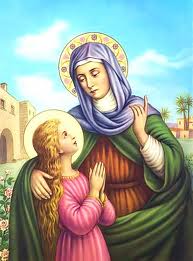 |
| Artist and friend Romano Ranieri in a recent photo. (photo credit: Scuola d'Arte Ceramica Romano Ranieri) |
In 1953 Romano Ranieri was attending the last year of high school, the fabled “Liceo Classico”.
During the summer of that year Romano entered the famous ceramics factory “G.Grazia” in Deruta as an apprentice. At that time workshops were structured in teams with team masters and a department head. Each apprentice had to follow strictly the rules of his master and of the workshop in general. Romano was selected to work in the team of Mr. Olivo Pelli.
Mr. Olivo Pelli has been one of the greatest artists in Deruta for the ORVIETO rooster pattern. During that summer Olivo gave Romano the order of painting a group of dinner plates in the rooster pattern. “The plates were for a customer in the United States,
Romano started painting the plates and in the late afternoon he was making the last plate. Out of his initiative Romano created something new: next to the open beak of the singing rooster he draw the lines of the pentagram and 4 or 5 music notes without saying anything to his team master.
The plate was fired and after they discovered what Romano had done, even the department head, Mr.Virgilio Spaccini, had something to say and Romano was reproached for his doing something without the approval of his superiors. The plate was discarded and placed among the seconds.
One day the United States
**************************************************************************
Romano Ranieri was already a very promising creative artist! Romano's father had been sending him to the home of ceramics masters in Deruta from a young age every single school summer break.With the passing of time, Romano Ranieri has been improving his talent for painting on ceramics also adding other supports like canvas and wood. He is now among the most important and best artists of the history of Deruta. In 2001 Romano opened a school where he teaches the art of painting. To know more about this artist and his school, visit the Romano Ranieri website.
Note for the reader -
PHOTOS OF ORIGINAL PLATES BY ROMANO RANIERI WITH THE SINGING ROOSTER COMING SOON! A FRIEND OF MINE OWNS THEM AS HE INHERITED THEM FROM HIS GRANDPARENTS BUT IT TAKES FOREVER TO GET THE PHOTOS. I WILL HAVE TO GO AND TAKE THE PHOTOS IN PERSON AND BE BACK TO YOU!
Note for the reader -
PHOTOS OF ORIGINAL PLATES BY ROMANO RANIERI WITH THE SINGING ROOSTER COMING SOON! A FRIEND OF MINE OWNS THEM AS HE INHERITED THEM FROM HIS GRANDPARENTS BUT IT TAKES FOREVER TO GET THE PHOTOS. I WILL HAVE TO GO AND TAKE THE PHOTOS IN PERSON AND BE BACK TO YOU!



